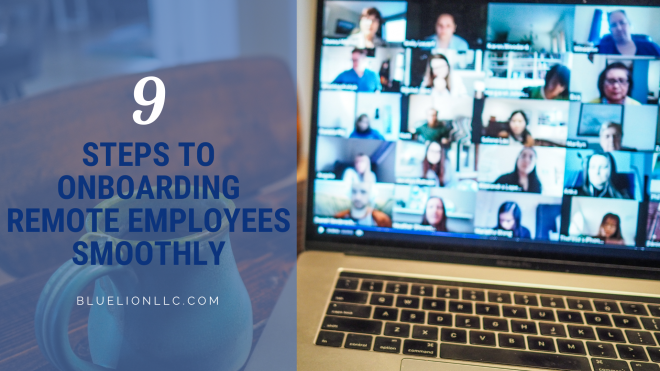
There are many benefits for remote employees and the companies that employ them. Workers enjoy things like more flexibility, comfort, and reduced or no commute time. According to the stats, working from home can also increase employee productivity—sometimes by as much as 25%! It’s becoming increasingly difficult for employers to argue that employees are not productive and motivated at home.
On the other hand, there is a darker side to telecommuting: the lack of work-life balance.
When we work where we live and vice versa, the lines become blurred. It is harder to set boundaries, yet too easy to answer that late-night call from the boss or keep working all night on a big project.
Then, there are the parents who are attempting to work from home while homeschooling their children. How can they succeed in both arenas and maintain their sanity? If companies are unaware of the effects of these stressors and a lack of separation on their people, it can quickly lead to burnout and decreased productivity and morale.
Fortunately, employers can play a crucial role by managing remote workers effectively and setting a healthy example. This means leadership should both communicate and show their employees that they value work-life balance.
Use the 11 tips below to improve your work-life balance and set a healthy example for your team. We’ve even included some ideas to help telecommuting parents!
1. Create a schedule and stick to it.
Just because you’re not “visible” does not mean you need to be available all the time. This is something all employers should keep in mind for both themselves and their remote workers. Remind them that you trust them to do their jobs well and on time, even when you can’t see them.
Managers can work with their reports to set schedules. This will ensure team members know when and how everyone is working. Make it company practice to use tools like Slack and Google or Outlook Calendar to show availability and working hours, so colleagues know the best methods and times to reach one another.
When your quitting time rolls around, turn off that computer and advise your team to do the same! Everyone must stick to their boundaries.
2. Make plans for off-work hours.
It can be easy to get sucked into projects or tasks, look up, and realize hours have passed, and you should have shut down a long time ago—especially when your workplace and home are the same.
Scheduling obligations and fun plans after-hours forces you to step away from work. This might be drinks with friends, a virtual hangout, or a family game night. We are more likely to stick to those plans knowing others are relying on us.
3. Schedule breaks.
Working too long without breaks leads to decreased productivity and results. After all, you’re not giving yourself any time to step away and refresh your brain and body, so how can they work at peak efficiency?
When creating a work schedule, incorporate breaks to do something you enjoy, or that helps you hit that quick reset button. This could mean taking the time to run quick errands or a short walk. Whatever you do, stay away from screens for about 10 to 15 minutes. Your eyes will thank you, too!
4. Host virtual “watercooler” sessions.
Schedule 10 to 15 minutes per day for fun chats with coworkers on whatever your preferred channel is (Slack, Zoom, etc.). You can even host brief team activities like meditations or fun random questions to promote sharing and engage remote employees.
For example, you might post a question like, “What is the last book you read? Give us your review in one sentence!” or “What’s your favorite pizza place and why?”
5. Encourage fresh air breaks.
Did you know that fresh air can improve productivity? Research shows that ventilation directly impacts a worker’s ability to process information, make strategic decisions, and respond to crises.
So when you start to feel that mid-day drag, step outside for a walk around the yard or neighborhood. At the very least, open a window! Encourage your employees to do the same to help boost their daily productivity and performance.
6. Remind employees to take self-care time.
“Me time” is another thing that often falls to the wayside when we work from home. Whether on breaks, early mornings, after-hours, or weekends, remind your team to indulge in those activities they love and bring them joy. This might include exercise, reading the next chapter in their current book, listening to a favorite podcast, or other hobbies and relaxing activities.
Self-care should remain a priority when working from home. It’s a meaningful way to reduce stress, renew energy, and find that work-life balance.
7. Tell them to use that PTO!
COVID-19 probably threw a wrench in your vacation plans. And at this point, one day might be blending into the next. Data from NordVPN recorded during the early weeks of the pandemic showed that remote employees are logging three hours more per day on the job. No wonder people are getting burnt out!
Time off is essential, even if it means a staycation and simply turning off your brain. Tell your staff to use their vacation days. Whether they enjoy family time, work on home projects, or simply relax, even some time off at home will help them to feel rejuvenated and ready to get back to work.
8. Lean in.
Just because you may be physically alone doesn’t mean you have to do the work all on your own. Keep this in mind as you show grace to both yourself and your team.
Managers should communicate regularly with employees to check on their emotional and mental health and remind them that it is ok to reach out for help. Whether this means looking for support in their workload or personal issues, let them know that resources are available. If your company has an employee assistance program (EAP), share that with workers.
9. Offer flexibility for parents.
Let’s not forget one group of unsung heroes during this pandemic: Work-from-home parents homeschooling their children. Many parents are trying to do it all right now, but employers can help them achieve a work-life balance.
One fundamental way businesses can do this is by offering flexible schedule options. Depending on the company needs, there are three types of flexible schedules that are particularly conducive for parents:
- Flextime: Allows a worker to choose their particular hours of work or the freedom to change their work schedule from one week to the next based on the employee’s needs. (e.g., requiring an employee to work a standard number of hours within a specified period with flexibility in start and end times)
- Compressed Workweek: Allows employees to work a standard workweek of 40 hours over fewer than five days in one week or ten days in two weeks (e.g., a four-day workweek of 10-hour days)
- Part-time Jobs: Allow employees to work schedules convenient for their parenting and other responsibilities. While often associated with jobs in retail and foodservice, these can include professional positions.
If you have employees with two adults working at home and trying to split up childcare and homeschooling, let them know it’s ok to work in bursts. Many parents will not be able to operate on a regular eight-hour day during this time.
Employers can support these workers, offer understanding, and focus on their quality and output rather than their exact number of hours spent working.
10. Create structure and routines.
Parents should create a routine for their kids to know when it is fun time and when it is quiet work time. By creating morning and lunch routines and scheduling time for fun, energy-burning activities, children will have structure and know what to expect during the workweek.
Telecommuting parents can even use a sign in their office that says “open” or “closed” so that kids know when not to disturb them.
11. Let your kids be.
Remember when our parents used to tell us to entertain ourselves? You can remind your children that they can find something to do, too! Suggest reading, quiet games, crafts, or outdoor playtime. Prep some easy healthy snacks and activities for them, so they don’t have to disrupt you during work time.
When it comes to successfully managing a remote workforce, employers must remember to stay flexible and emphasize constant communication. Keep those lines open and encouraging employees to perform their work in a way that allows them to achieve the work-life balance they’re searching for.
If you feel your company needs help managing your telecommuting employees, BlueLion’s human resources experts will be happy to assess your team and practices. Contact us today at info@bluelionllc.com or 603-818-4131.
The information on this website, including its newsletters, is not, nor is it intended to be legal advice. You should contact an attorney or HR specialist for advice on your individual situation.












